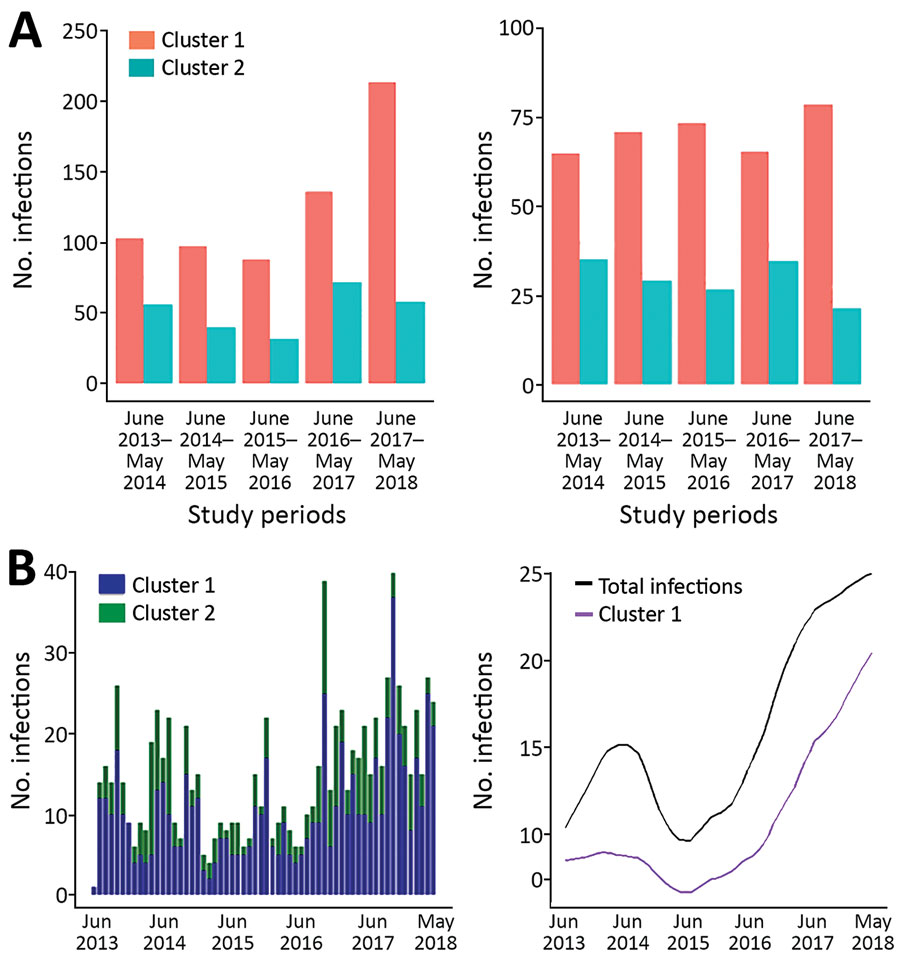Volume 26, Number 7—July 2020
Research
Efficient Surveillance of Plasmodium knowlesi Genetic Subpopulations, Malaysian Borneo, 2000–2018
Figure 4

Figure 4. Frequency and trend line patterns of Plasmodium knowlesi subpopulations in Kapit division, Sarawak state, Malaysian Borneo, June 2013–May 2018. A) Distribution of 637 cluster 1 and 258 cluster 2 infections during each year of the 5-year period. B) The frequency pattern of infections and estimation of trend for the combination of cluster 1 and cluster 2 infections, and cluster 1 infection alone. The trend line of cluster 2 infections is not shown because of a low number of cases.
1These authors contributed equally to this article.
Page created: April 10, 2020
Page updated: June 18, 2020
Page reviewed: June 18, 2020
The conclusions, findings, and opinions expressed by authors contributing to this journal do not necessarily reflect the official position of the U.S. Department of Health and Human Services, the Public Health Service, the Centers for Disease Control and Prevention, or the authors' affiliated institutions. Use of trade names is for identification only and does not imply endorsement by any of the groups named above.